The first cigar I ever smoked was when I was studying abroad in Florence.
My friend Kath had been given one as a gift, so we lit it up along with a lot of giggling, took turns with a puff each – and suddenly I felt horribly sick. No one had ever told me not to inhale.
That evening spent holding my stomach in disgust remained my only education into the world of cigars for the next eight years, and although I knew their importance in Cuba, I wasn’t planning to pay much attention to the things during my visit.
But cigars, and the mysteries surrounding them, are an intrinsic part of a tourist’s experience in Cuba – and I could never have guessed how much they’d suck me in.
Pun intended.
Cuba’s obsession with cigars
Maybe it’s because of the jinetero culture in Cuba, but within minutes of stepping out onto Havana’s humid streets I’d heard the word ‘cigar’ more often than I ever have in my life. The barrage of cigar references is unbelievable, and it comes from every walk of life.
One of the first things each of my different casa owners told me was that they’d help me out with buying authentic cigars. Fellow guests in Havana told me the merits of a cigar factory tour, and came to dinner with their recently purchased puros which they planned to smoke that evening. Every Cuban man I passed on the streets would strike up a resounding chorus of “hey lady, you want cigar?” It became the background theme tune to my entire month in the country.
So what makes Cuban cigars so popular? I watched the cigar tourists in fascination, bartering with shady looking men in the street and joyfully lighting up fat cigars while leaning back in bars and cafés, sipping on mojitos. I never indulged in this activity, simply because it would never be an indulgence for me. I don’t know the first thing about cigars, whether Cuban or not – although I knew the perils of buying cigars on the street, in case they were fakes.
I had naively made the decision that the Cuban locals wouldn’t be as obsessed with cigars – it’s a gimmick for the tourists, surely! – but I was mistaken. I saw people smoking while riding their bicycles; men taking long puffs at their domino games; well dressed women in central Havana waiting for a photo opportunity, a fat cigar hanging casually from their fingers.
I also couldn’t help noticing the stained teeth of a few of my casa owners, which belied their interest in the things, too.
I basically got caught up in the cigar love – even as a complete outsider from it – and I started thinking. The cigars smoked by Cubans had to be real; they wouldn’t be caught dead with fakes, would they? But as for the fake cigars sold to unsuspecting tourists by savvy touts – where did those come from? Surely there had to be just as big a market for making fake cigars as real ones?
From the streets to the farmland
I headed to Viñales after Havana; a small, unassuming town that’s cemented itself firmly on the tourist trail exactly because of its simplicity. Tourists revel in the anti-Havana, going for horse rides and long country walks along orange mud tracks, and enjoying a sense of peace and quiet – a direct contrast to the never ending noise and chaos of Cuba’s capital.
Viñales is also home to abundantly fertile farmland: it’s located in the Piñar del Rio province, which produces 70% of Cuba’s tobacco. For tourists interested in the tobacco process, it’s an obvious place to come. Particularly when you realize that a huge portion of the local income stems directly from tourism.
We were on a horse riding tour when our guide pointed to a small thatched roof in the distance.
“That’s a secadero – a tobacco drying house,” he said, as I immediately translated for the rest of our group (hello, new career as a Spanish-English translator).
As we rode our horses towards the plantation, the guide gave me a rundown of how the tobacco industry works from a Cuban farmer’s perspective. Complete with a requisite shady political slant to it.
The Cuban tobacco harvest
Tobacco is planted late in the year and grown for three months, during the wet season, before it’s harvested and stored in the drying house for at least three more months – although it’s often longer, as they wait until the yearly rains come to remove it.
This is when the government steps in. Representatives visit each plantation and take 90% of the harvest in order to make official Cuban branded cigars, leaving the farmer with 10% of their own tobacco to use how they see fit.
That remaining 10% still has rules applied to it, though. All the cities in Cuba are where the government’s branded cigars are sold, so the fincas can only sell their homemade cigars in Piñar del Rio, giving them only two types of clients; the Cuban locals, and the tourists who visit fincas and feel compelled to buy real, unbranded, eco-produced cigars from a farmer who handrolls cigars in front of them.
Unsurprisingly, a large part of these farmers’ profit comes from the latter – which means that even though they’re farmers first and foremost, they have to be acutely aware of the tourists in Viñales. The thirty or so farms in the region all have to tempt tourists in and sell their homemade cigars in order to really make a profit.
Michel, the owner of this plantation, was quick to explain that his tobacco, even though it’s the ‘worst’ portion of his entire harvest, is treated in a very different way to the government’s stock.
“They put the tobacco through a factory. It’s processed with chemicals and nicotine and other things. On the farms, we make a mix of water, fruits like pineapples, lemon, sugar cane, cinnamon and rum – and we boil the tobacco in that mix for about 30 minutes, then it goes back to the secadero.”
Some farmers spend a few months on the fermentation process: others, like Michel, spend as much as a year. But there’s clearly a reason. I watched Michel as he pinched together slim rolls of tobacco leaves and rolled them deftly across a piece of wood. He barely even glanced down to check what he was doing.
I asked him how many cigars he makes, in general. He laughed at the question.
Read my four week itinerary for travelling in Cuba here!
Getting my first insights into the Cuban tobacco industry from a tobacco farmer immediately made me biased about which method of cigar production I preferred.
Walking through the earth the tobacco is grown in and talking to the farmers who harvest it (not to mention standing in the drying houses where the government snatch away the best looking leaves) made me certain that the natural, home rolled cigars were basically guaranteed to be better. By the sheer process of their creation, if not by their taste.
But despite this, I still really wanted to see how the process worked in the bigger cities – where the real, infamous ‘Cuban cigars’ come from.
Visiting a cigar factory in Santa Clara
The biggest and most visited cigar factories are in Havana, but when I arrived in Santa Clara I found my way to an unobtrusive building which I knew housed a factory. I pushed past a small metal door and faced a lone woman at a wooden table inside, who didn’t look impressed to see me.
“Hola… Hay turs por la fabrica aqui?”
She nodded slowly, but it took about twenty minutes of scuffing my feet against the cement floor and exchanging awkward nods with a security guard for a woman to introduce herself as a guide.
As we walked out onto the factory floor, she told me I couldn’t take any photos. I tried to protest, but apparently the government doesn’t allow it – which immediately rang internal alarm bells about what I was going to find. Did the Cuban government run their cigar factories like sweatshops?
Actually, the place seemed pretty decent. I probed my guide for facts as we moved between the rows of workers, all of them diligently rolling tobacco inside cut leaves, molding and pressing and moving each new cigar to a neat pile on the side of each desk.
She told me there are 250 workers in the Santa Clara factory altogether, but around 100 people come to work each day. They work eight hours a day, six days a week, with two hours free for lunch and a break, and of the 27 official Cuban brands they produce Montecristo, Partagas, Romeo & Julieta, Punch, and Robaina cigars.
I didn’t get to try any of these cigars, of course. Walking around the factory floor with the guide was very much a ‘these are the things I’m allowing you to see’ kind of experience. No touching, no photos, no smoking – and when I spent more than six or seven minutes chatting to the two women carefully twisting dials on the eccentric looking quality control machine, my guide abruptly cut in and forced me to leave.
Apparently too much talking isn’t permitted, either.
The Partagas cigar factory in Havana
By the time I got back to Havana for my final few days in Cuba, I knew I had to visit one of the major cigar factories to see how it compared to my other cigar experiences – even if Lonely Planet had likened the tours to being on a conveyor belt.
I waited in the reception area of the Partagas factory until there were enough native English speakers to constitute a group, then I trooped dutifully up several flights of stairs along with a middle aged couple from Yorkshire and their gangly teenage son, a guy and girl on their honeymoon, and our female guide.
The workshops looked the same as they had in Santa Clara. Fragments of tobacco leaves littered the floor, trodden underfoot by rows of people at wooden desks with headphones in their ears. Hemp bags hung from the backs of wooden chairs, overflowing with tobacco; bodies brushed past newspaper cuttings glued to the sides of desks. Big fans turned slowly overhead, but the air was still thick enough to warrant a lot of bare chested men.
There was no chance of talking to any of the workers in this factory, though. Our group of tourists was separated from the Cubans by a wall of empty window frames, and as we walked past each row of people, looking in at them like zoo animals, things felt all kinds of wrong. Whenever a Cuban glanced up and caught my eye, I wanted to look away: overtly aware that I was invading their space, and probably shouldn’t be there at all.
Read my guide to budget travel in Cuba here!
The Cuban cigar conundrum
The cigar is a luxurious product, designed purely for enjoyment, and it’s absurdly popular – people around the world are so infatuated with cigars that some will visit Cuba specifically for cigar tourism. But it’s not just the tourists who love Cuban cigars; the income generated by the cigar industry in Cuba is a huge part of the country’s economy, so it makes total sense that the government exploit every stage of the cigar making process for some sort of gain.
So what does that government gain mean? It means that farmers aren’t allowed to reap the true benefits of their hard labour; that factory workers are subjected to constant objectification; and that tourists buy into the hype to such an extent that they’re fleeced on street corners, spending exorbitant prices on fakes.
Before coming to Cuba, I’d hoped to eventually understand the global obsession with cigars. I definitely didn’t manage that – but I did realise that Cuba’s government is just as eager to sell the cigar experience as the cigars themselves. Even down to prohibiting photography inside the factories, yet offering multimedia DVDs for sale, complete with high res images and a short film.
I didn’t buy the DVD, and I didn’t buy the official, branded Cuban cigars. The only tobacco I took off the island with me was rolled on a wooden bench by a man with tattooed hands and a straw hat. And I’m really glad he’s the one who got my money.

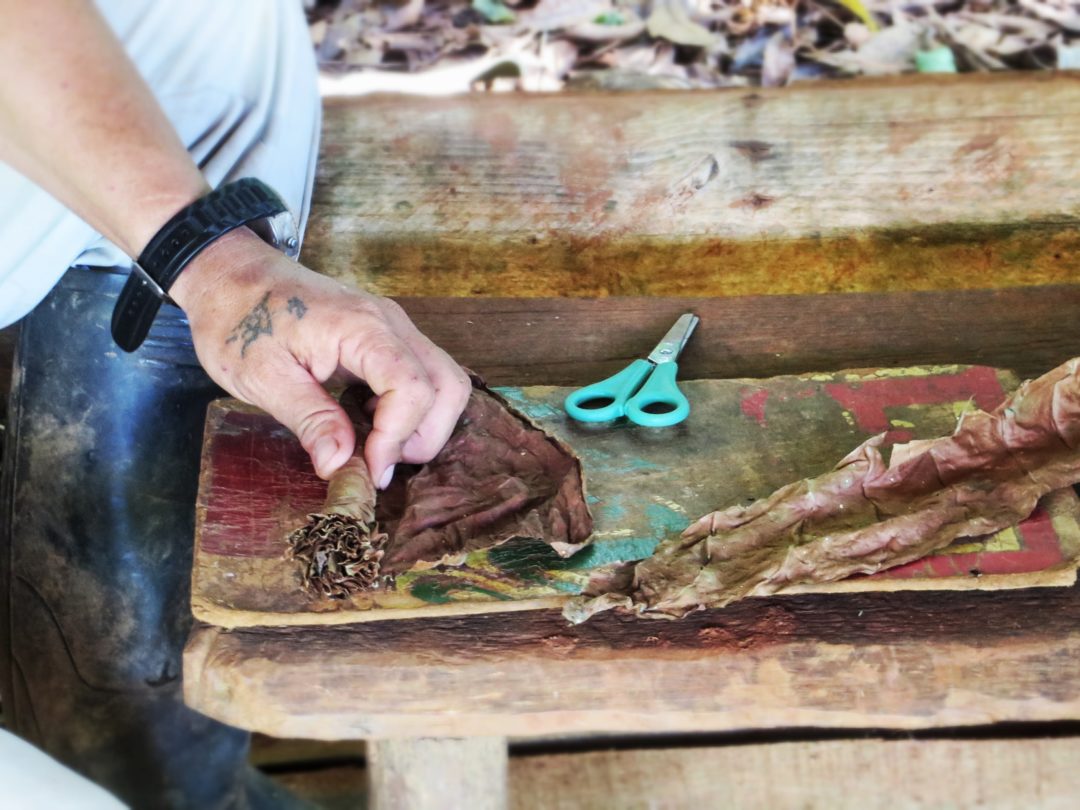

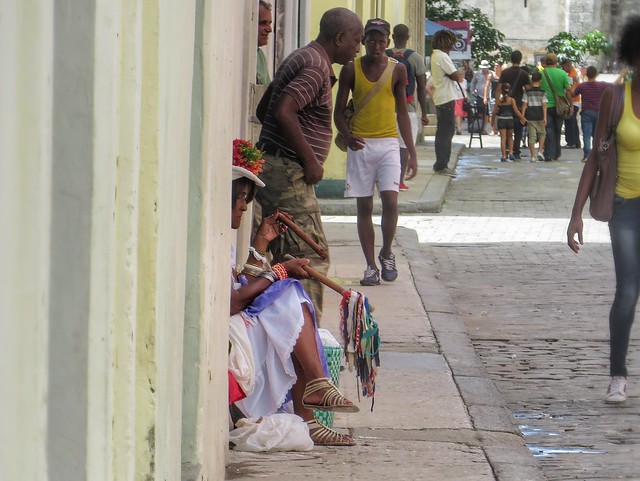
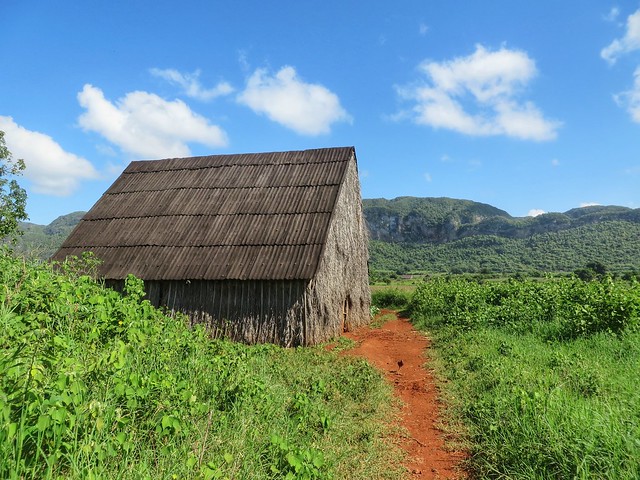

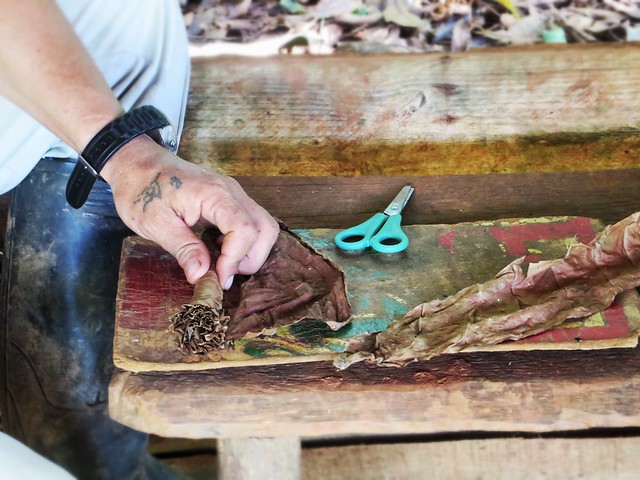
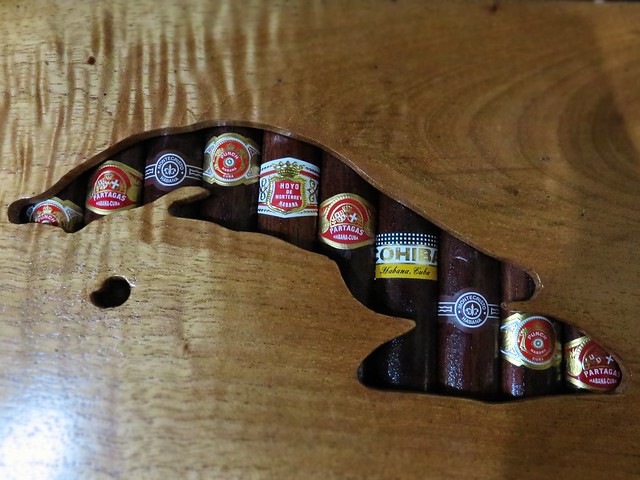
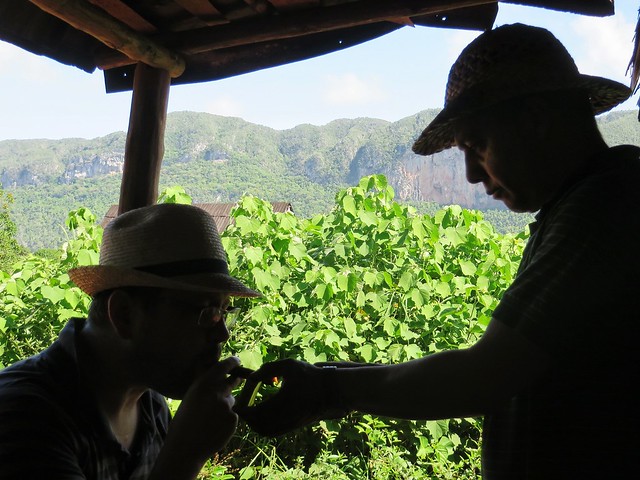
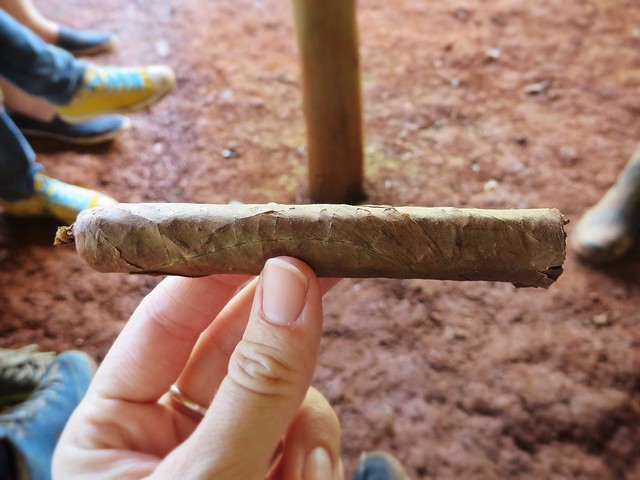
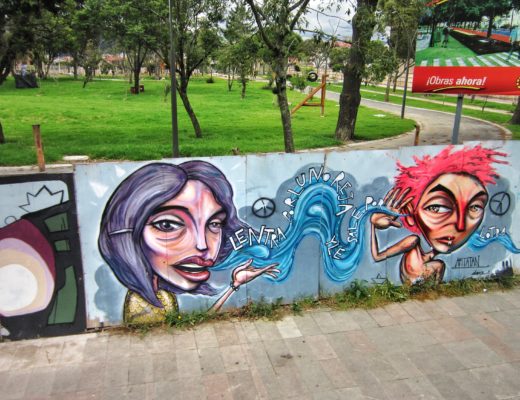
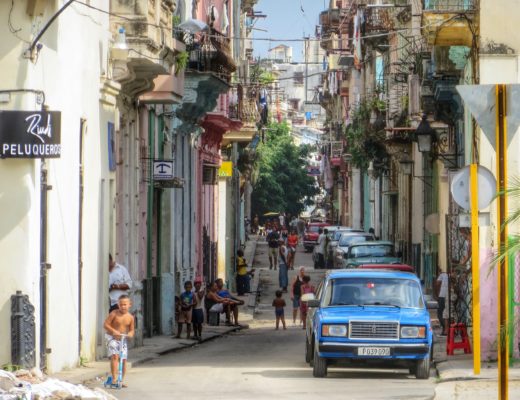
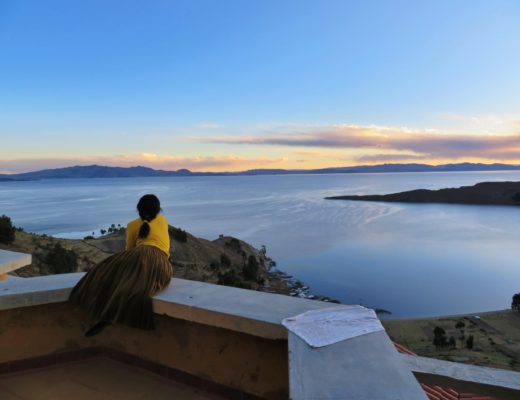
16 Comments
Yves bnb
September 11, 2014 at 8:55 amVery nice article. They say that the cuban cigars are rolled on the legs of the beautiful woman and are the best in the world. I don’t smoke myself, but I’ve heard that the quality of a cuban cigar is outstanding…
Flora
September 26, 2014 at 2:45 pmYep, weirdly enough I’d never heard the story about cigars rolled on beautiful women’s thighs until I’d already left Cuba – I hate to break it to you but I didn’t see much evidence of that..
Brenna
September 11, 2014 at 10:14 amAs I was only in Havana when I went to Cuba, I ended up doing a tour of one of the big factories there. I also felt very strange being there, and I really wish that I could have travelled outside the city and see the process there, like you did.
I have to admit that I will always love cigars, especially the smell of them – my dad smoked them when I was a kid (although he’s quit now) and so the scent always reminds me of home. I used to sneak (read: steal) some of his Cubans and smoke them with my friends, starting around age 14. I haven’t had one in years, though…
Flora
September 26, 2014 at 2:46 pmMaybe it’s because I never grew up with them but I really can take or leave a cigar. Actually probably just leave them! But I loved learning about their story in Cuba regardless 🙂
Andreas Moser
September 23, 2014 at 6:23 pmI love cigars and smoke too many (had two already today), but I think that Cuban cigars are over-hyped. Outside of Cuba, they are more of a status symbol for the “nouveaux riches”, while connoisseurs know that Cuban tobacco is not what it used to be after decades of under-investment in the soil and thus the tobacco plants.
Much better are “Te Amo” cigars produced in Mexico, and – unknown to many – Italian Toscano cigars. Oddly, the latter are also much cheaper.
But still, I am looking forward to a visit of Cuba to see the production, to taste different cigars and to revel in that part of the culture.
jerry
March 17, 2016 at 6:11 pmwhat? you equate, nay exalt a Te amo to a Bolivar? form a full bodied cohiba to a mild sweet San cristobal, Cuban cigars offer a rich aroma and unique taste. sorry i don’t see anyone faking Te amos..?
Nico
April 15, 2018 at 2:44 pm“sorry i don’t see anyone faking Te amos..?”
Because the money in fakes is in the Cubans, since these are sold to gullible tourists, who just know enough about cigars, to believe that Cubans are somehow special. That’s why. Oh, also the bigger the price tag of what you fake, the more room you have to profit. And given how overprized many Cubans are, it is only good business practice to fake these.
Among many cigar smokers, Cubans are not on a level above everything else. Ever since the industry has spread through the Carribean, Cuba is merely an option. Not the non plus ultra.
Victor
October 26, 2014 at 4:03 amVery interesting post, Flora. I read it and thought, how a sigar can be fake? Made not from tobacco or what?
Flora
October 26, 2014 at 6:45 pmI meant in terms of the official Cuban stamp of authenticity :p Obviously a cigar is a cigar, but the typical Cuban cigar is made with tobacco leaves of a particular quality, whereas the ‘fakes’ are made with substandard materials – so they don’t smoke as well or taste right!
Joe Bowen
December 19, 2014 at 4:41 pmI am an avid cigar smoker. I have smoked many Cubans, Dominicans, Nicaraguans and Italians. As Andreas mentioned, above, the Toscano cigar is an excellent cigar. It’s much smaller than your conventional Cuban but is rolled tight and burns long. The flavour is very different and, to my taste, superior to many “American” cigars.
Now, by ‘American’ I am, of course, referring to Dominicans and Nicaraguans. I find that these cigars are a little too consistent. No matter how tight the roll is they still draw really well. This reeks of extensive processing and additives – the best way to have McDonald’s like consistency.
I have many cigars from these other regions only because they are cheaper than Cubans and I smoke 3-4 cigars a day. I made the compromise to save money. I consume, now, about 7 Cubans / week and 15 – 20 ‘American’ cigars or Toscanos (Italian)
The truth is, Cubans really are better (IF they’re real) They have a creaminess to them that is non-existent in American cigars. There is just a more natural inconsistency that makes them that much better. With the US and Cuba now in discussions, I think I will rush off to Cuba as soon as possible so I can see it one last time before it is inundated with American tourists and corrupt investment.
I should mention, I am a Canadian. This is why I am able to shop the whole market and make an educated observation of the spectrum of cigars. Then again, to each his/her own.
Flora
January 6, 2015 at 3:44 pmThanks so much for your knowledgable input, Joe! It’s hard to find out exactly what it is about Cuban cigars that makes them so special unless you hear it from an expert 🙂
Perjantai 10.7. – Viva Che, Santa Clara ja Mejunje! Viva! | Prikaatipäiväkirja
September 17, 2015 at 7:19 pm[…] [iii] Mielenkiintoinen blogikirjoitus kuubalaisesta sikarintuotannosta löytyy täältä https://floratheexplorer.com/the-truth-behind-cuban-cigars/ […]
Yamm
November 20, 2015 at 4:55 pmHi Flora,
Enjoyed reading your article.
I’ve just come back from Cuba where I visited a Vinales tobacco farm and bought some cigars. The one I smoked on the farm was nice but I’ve bought a humidor to keep them in as the farmer said they’d get better with age.
Was wondering how you were getting on with your cigars. Did you age them as well, did they get better?
VIVA LA CUBA – tara sails
December 2, 2016 at 2:26 pm[…] Cuban Cigars: https://floratheexplorer.com/the-truth-behind-cuban-cigars/ […]
Iza
January 13, 2020 at 10:50 amHi Flora, can you share how you arranged horse riding trip? Did you book in advance or find something being in Vinales already? How much was it and how long it lasted? Yoy managed to see all the highlights of Vinales? Regards, Iza
skdjdj
February 21, 2024 at 11:23 amI followed a similar path from havana to vinales and also toured a farm that ended with seeing the owner roll and hand out his cigars. I love a cigar although admittedly rarely smoke them and the difference between the fake and branded cigars I had in Havana with the Vinales style was chalk and cheese. The tourist sales aspect of the job was mastered by our guide who spoke great english and gave a complete infomercial to the group, and his kindness and humour got him alot of sales. a very interesting topic